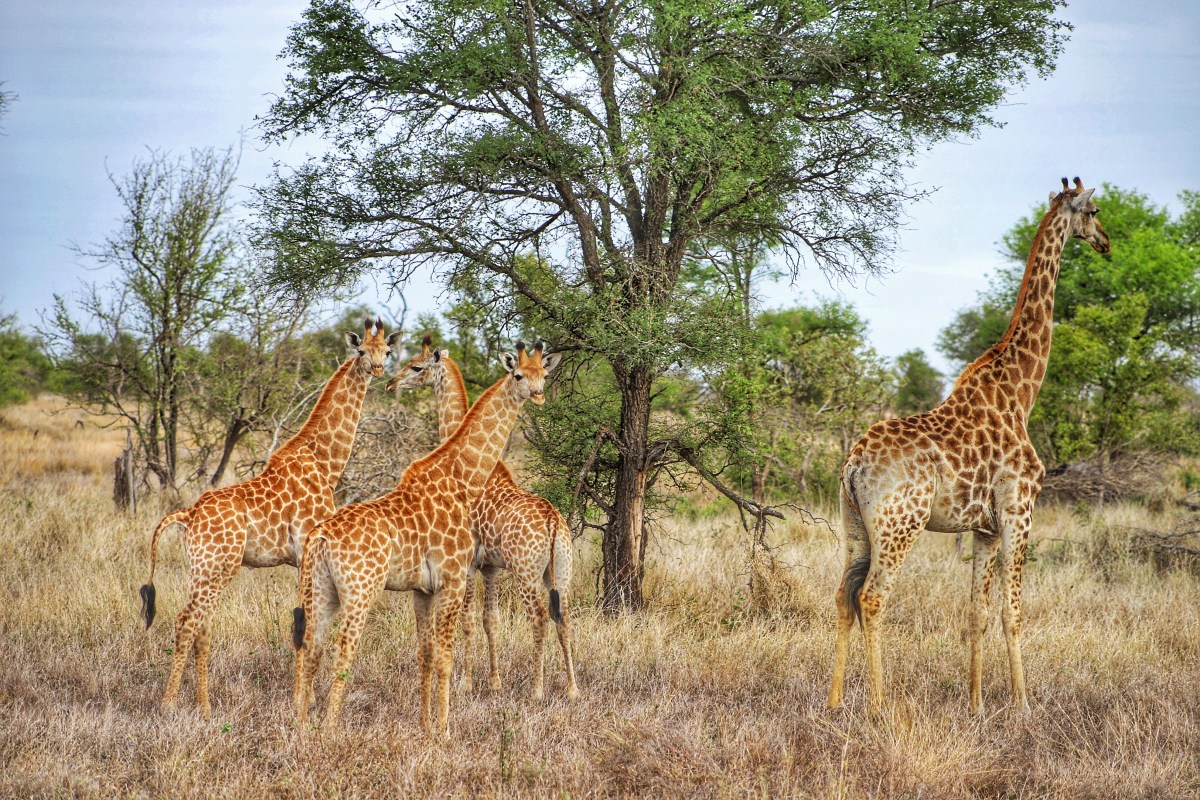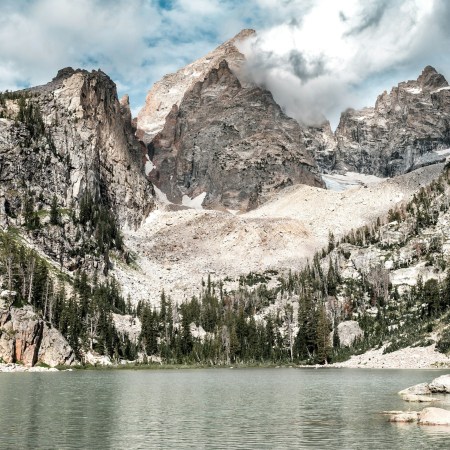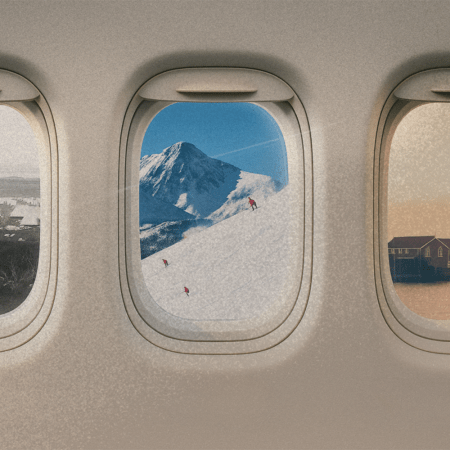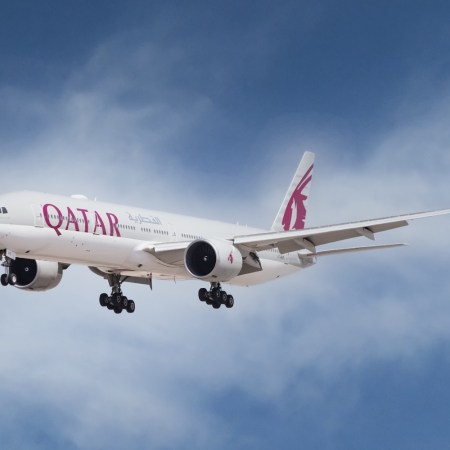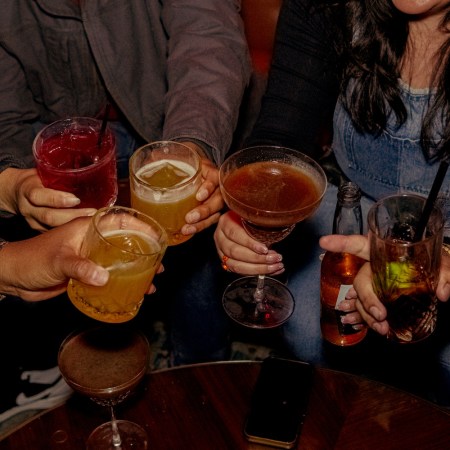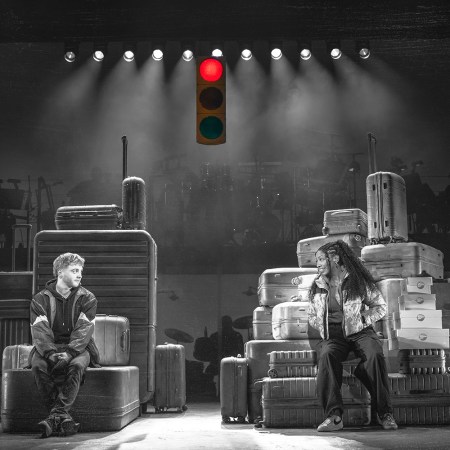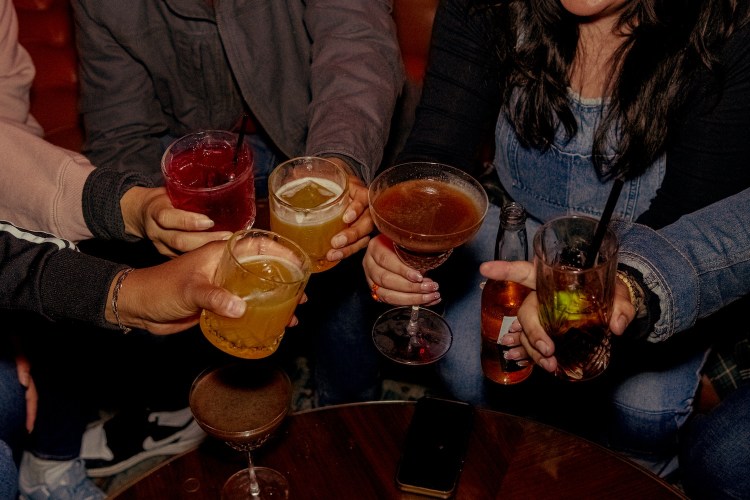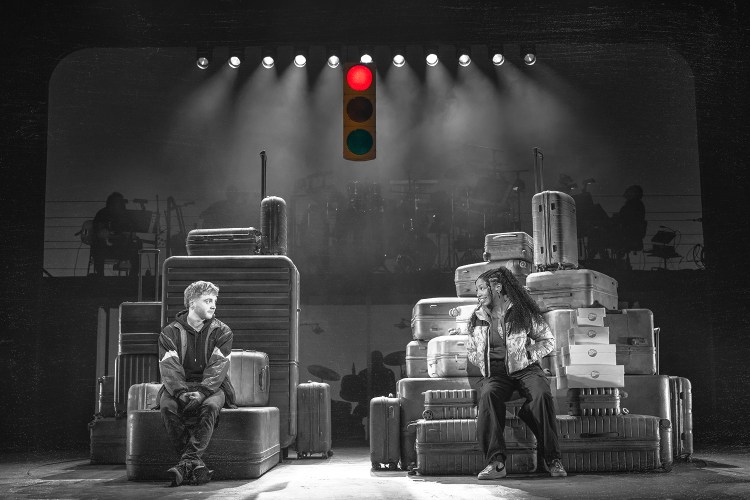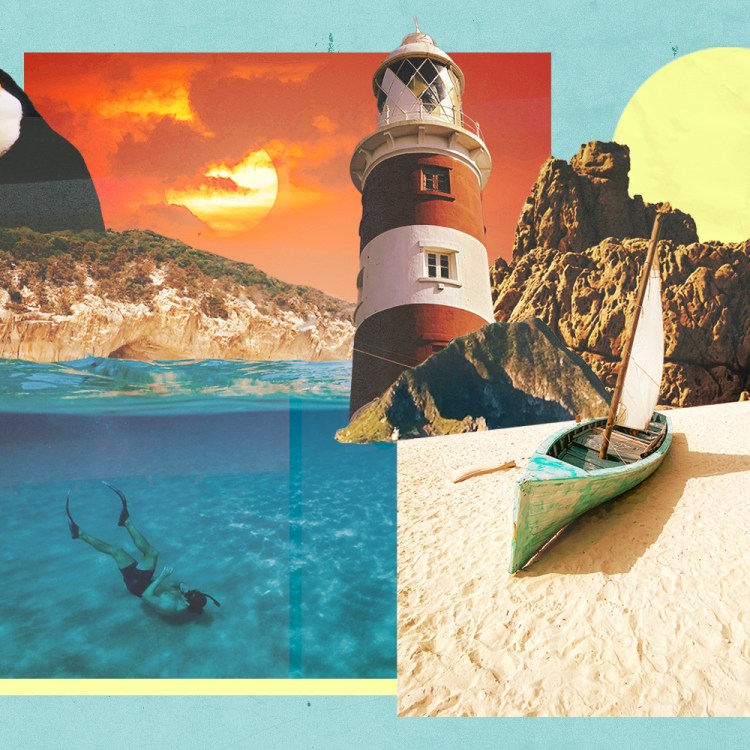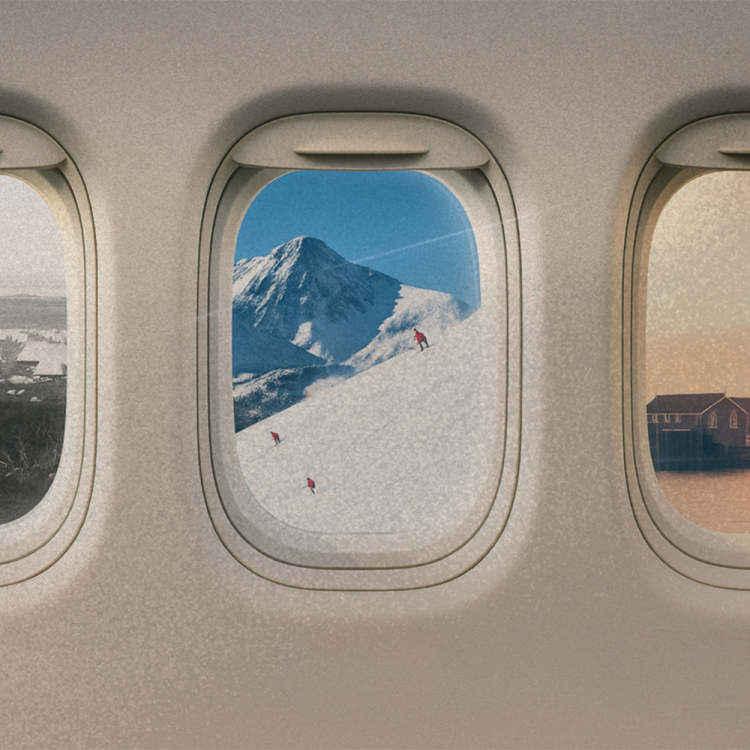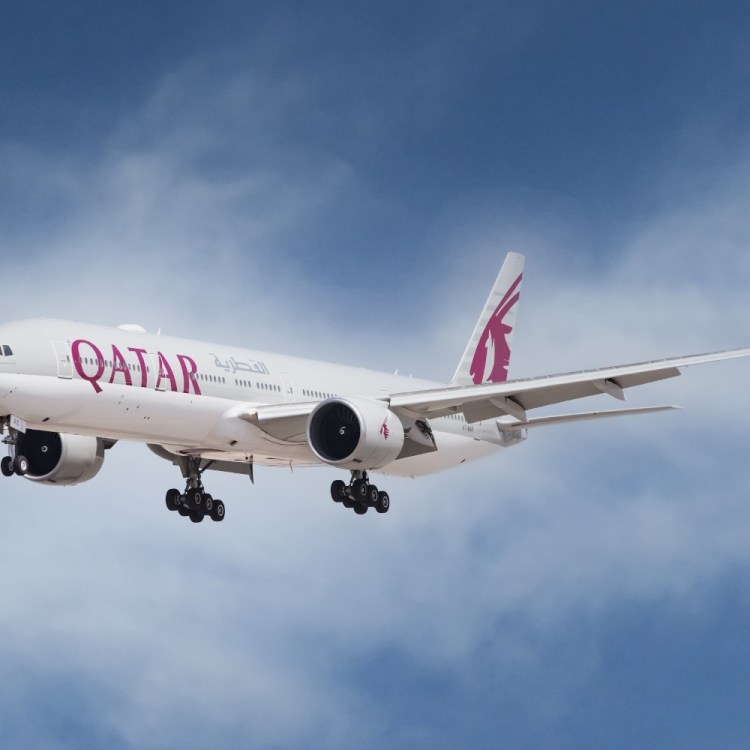We’re two hours into a rainy game drive, not a big cat or intriguing herd of animals in sight, when our guide, Lazarus, suddenly pulls his safari-equipped Land Cruiser off the road. “There are some impala here,” he says, the vehicle crunching over dead branches as he inches it into a thicket. Now, it’s been a slow session, but you don’t stop for impala on a game drive after the first 30 seconds of your first day on safari, unless those impala are about to become some lion’s meal for the evening.
What Lazarus meant was that impalas are the only guaranteed animal we’d find out here. “I always say if the animals were in a cage, then you can guarantee,” Laz previously mentioned. He’s the head guide at Sabi Sabi Earth Lodge, the upper echelon offering of Sabi Sabi’s four lodges in its own private game reserve, situated within the larger Sabi Sand Game Reserve and adjacent to South Africa’s Kruger National Park. “But I cannot guarantee an animal that wanders and roams on its own.” Unless it’s impala. They’re ubiquitous. They’re guaranteed. Stopping for impala on a game drive is like having your taxi driver pull over to point out a pigeon in Manhattan.
I look upfront and Laz, who’s a dead ringer for Wood Harris as Avon Barksdale, betrays himself with a bit of a coy smile. He wasn’t stopping for impalas, of course. He stopped for a beautiful female leopard, an animal which displays an elegance bordering on arrogance, its resplendent form and enchanting patterns buoyed by raw, terrifying power. “It’s good to play tricks sometimes,” Laz says with a chuckle. “I think you were asking yourself, ‘What do we have to do with impalas?’”
He got us good.
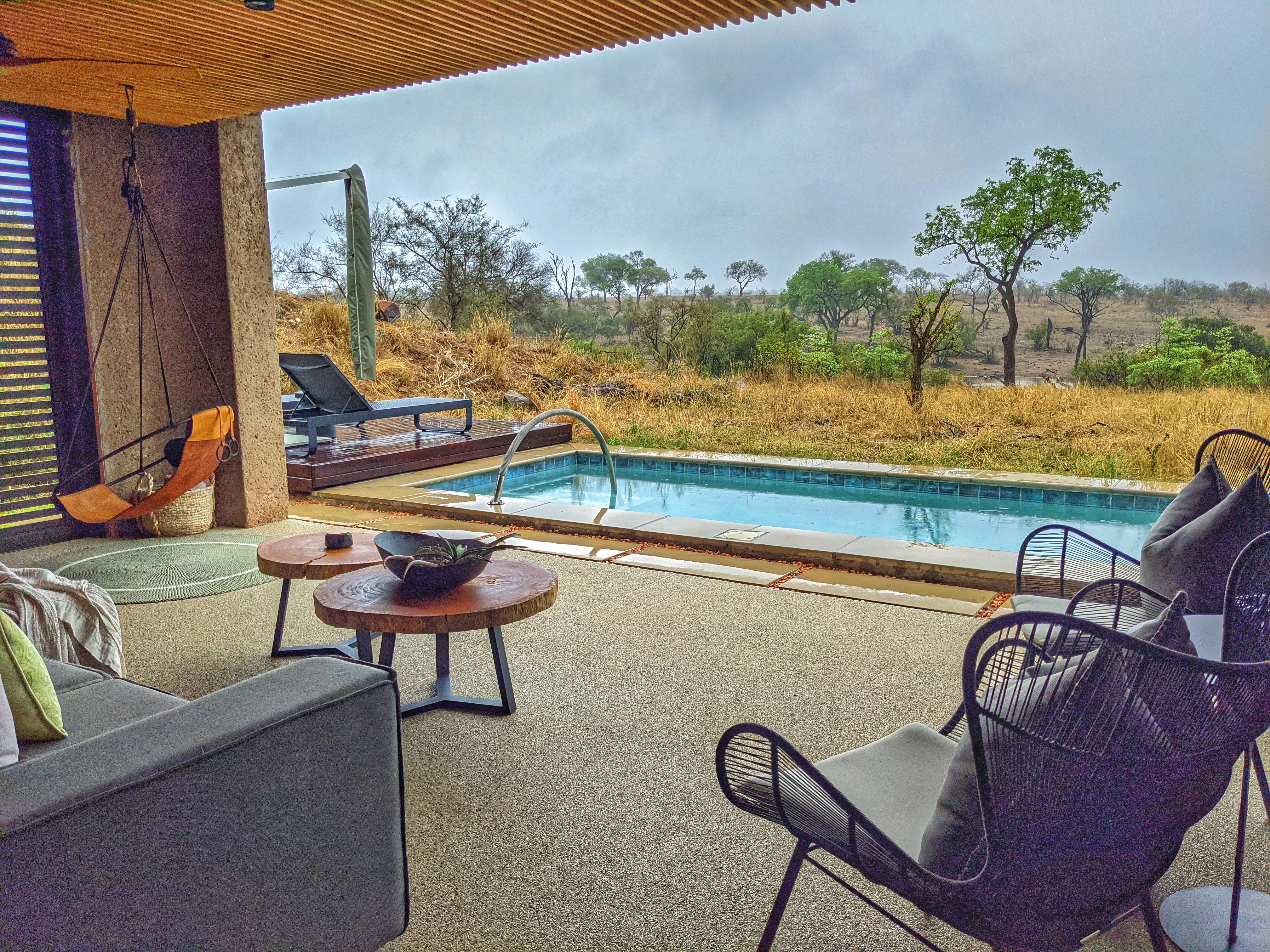
I’m on the second stop of a sprawling two-week safari through South Africa and Botswana planned by Niarra Travel. The crucial benefit of working with a bespoke operator such as Niarra isn’t just access to the best lodges — along with the seamless coordination of bush flights and airport transfers and, these days, COVID tests — but the ask-and-you-shall-receive mentality of its team. For me, that meant mixing a food-focused stint in Cape Town with a dash of wine country thrown in for good measure, while hopping between a handful of southern Africa’s most spectacular and luxurious safari lodges. For others, it might mean heading farther afield and being dropped off in the bush with a backpack and a tent. Whatever your travel preferences may be, they’ll get you sorted out with an unforgettable adventure.
Of course, Niarra isn’t the only one with this white-glove mindset. Laz has one too, but he loves to keep the travelers in his charge guessing, and the next morning after our leopard sighting, he was back at it once more. After several days of searching in vain for cheetahs, the most coveted sight for Marianne, a solo traveler in my group, Laz turned to her, apropos of nothing, and said, “What would you do if you saw a surprise? Would you smile? You would smile, I think.” Ten minutes down the path and he led us straight to a cheetah with her two cubs.
Ask and you shall receive. Usually, at least. Sometimes it doesn’t happen, so there’s some thrill of the chase involved, some hit and miss. You need a bit of luck, and some positive thinking, and you need a long enough stint so that if you strike out for a few days you still have a few more chances.
It’s a bit like sitting down at a blackjack table. Sometimes you lose hand after hand; sometimes you go on a hot streak and can’t be stopped. Sometimes you have to pay your dues and get past some bad beats before you start raking it in, but those quiet drives — when you have to remind yourself, “Worst case scenario, I’m still enjoying a scenic ride through the African bush” — make the payoffs all the more exciting. It’s a sudden jolt of adrenaline. Electricity in the air.
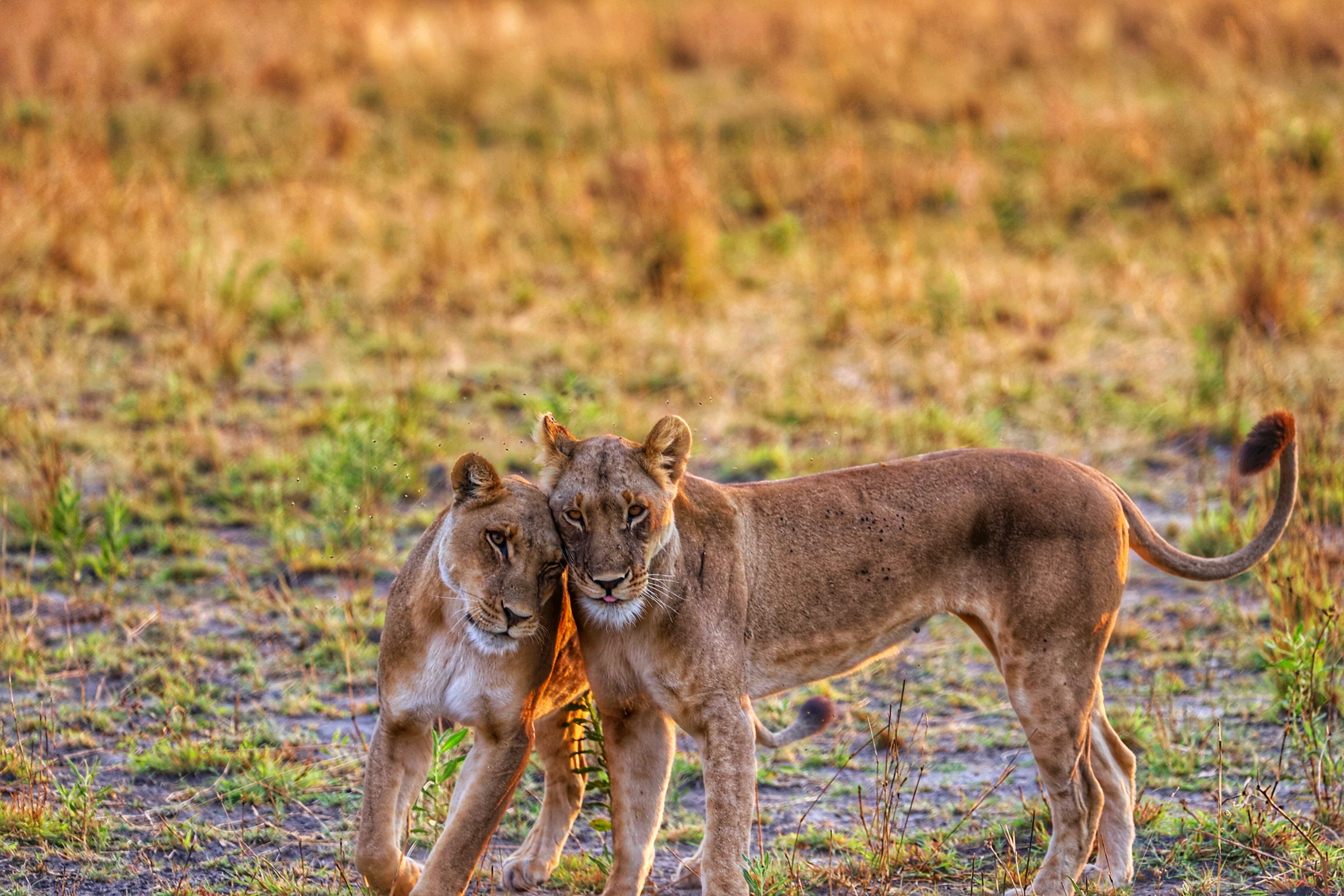
First Stop: Botswana’s Okavango Delta
Before Laz was toying with our emotions and dropping philosophical life lessons on us in Sabi Sabi, my safari began in the Okavango Delta of Botswana, with a stay at Great Plain Conservation’s Selinda Camp. This is the type of lodge you probably conjure up when thinking of a swanky safari stay, a wondrous outpost in the bush where in all likelihood a huge herd of elephants will walk right past as you enter camp.
Selinda is a Relais & Châteaux property with just three suites, each of which is an enormous tented villa replete with a private plunge pool, classically styled leather and wood expedition furniture, and huge copper soaking bathtubs with views of the wildlife beyond. While the tents remain open to the environment, ensuring you hear each hungry, hungry hippo in the waters of the Spillway just beyond your personal viewing deck — hippos sound shockingly like Jabba the Hutt, ho-ho-ho-ing through the night — underneath the canopy of your king-size bed, there’s an AC vent to keep you cool at night.
While Selinda is the tented camp of your dreams, a safari in the Okavango Delta is different from how you likely envision safari. Yes, the Big Five are on offer (so you’ll get your lions and leopards, and you’ll take your morning and evening game drives), but instead of vast plains, the area features the distinct flora and fauna of a river-and-marsh ecosystem.
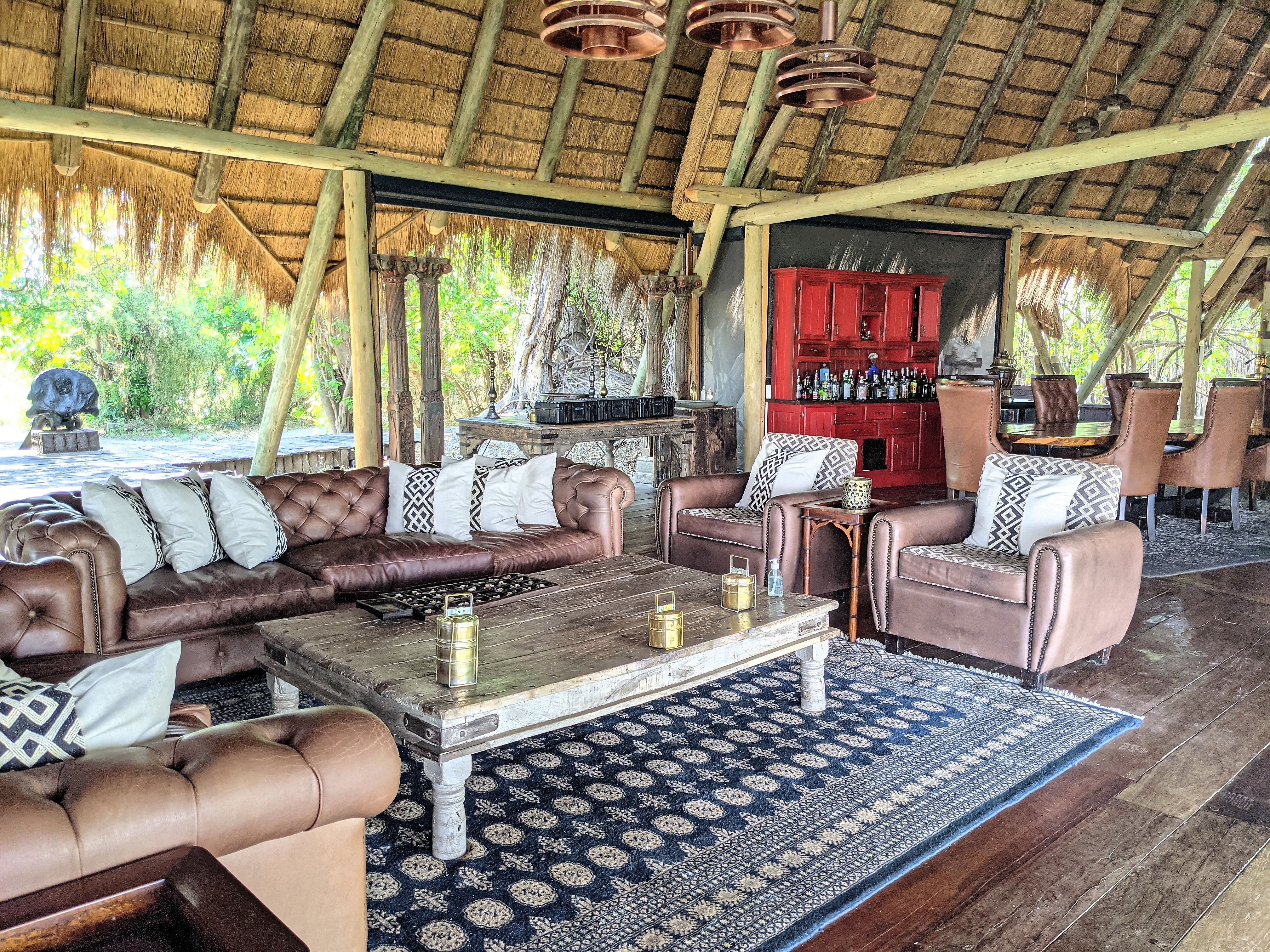
There are palm trees in the Delta, known as Lala or Molala palms, and those hippos are ubiquitous here. You don’t truly appreciate their immense presence, either, until you get on the water yourself for a boat ride, as opposed to a game drive. For every pair of wiggling ears you see above the waterline, there are a few others lurking out of sight. Sometimes an entire pod could be hiding out of view, ready to pop up and give you a scare. On the water you’re in their domain, and their brute strength is palpable.
Rainwater is a celebrated provider of relief, and life, across the plains of Africa, but perhaps nowhere more so than in Botswana, where the Kalahari Desert eats up almost three quarters of the country’s land. Even in the lush delta, the environment undergoes a massive transformation between the rainy and dry seasons.
When I ask my guide here, Parks, a self-described “Delta boy,” how to say cheers in Tswana, I learn another valuable lesson. He tells me that the term is pula, the word for rain, or to let there be rain. You’re toasting to rain, to let it come down. To bask in its life-giving force. The pale blue of Botswana’s flag symbolizes rain, and pula is even the name for Botswana’s currency. As Park explained to me, rain is truly the beginning and end of everything in Botswana — only with rain can you grow crops, provide food for your family and perhaps even make a bit of extra income. Pula begets pula.
A Taste of Cape Town
After the heat of Botswana it was time for a diversion to Cape Town for a stay at the Ellerman House. Described as being located at the foot of the Lion’s Head, one of Cape Town’s famous peaks — though not as famous as its main tourist attraction, Table Mountain, from which you have beautiful vistas of the entire region if the notorious, omnipresent fog gives you the opportunity — the property was built in 1906 as a private home, and has been converted into a supremely stylish five-star hotel with 13 rooms spread across a series of interconnected buildings and wings.
The hotel houses a staggering South African art collection of more than 800 pieces, a stunning wine-tasting room with a space-age carbon-fiber corkscrew bottle display, and terraced outdoor gardens with a pool lounge area and views of the ocean below. Guest suites are palatial and expansive, and while there is a main dining room and bar, that ask/receive ethos comes to life here as well, as the service team will serve you anything, anywhere, at anytime. There’s even a 24/7 pantry room stocked with fresh baked desserts and treats.
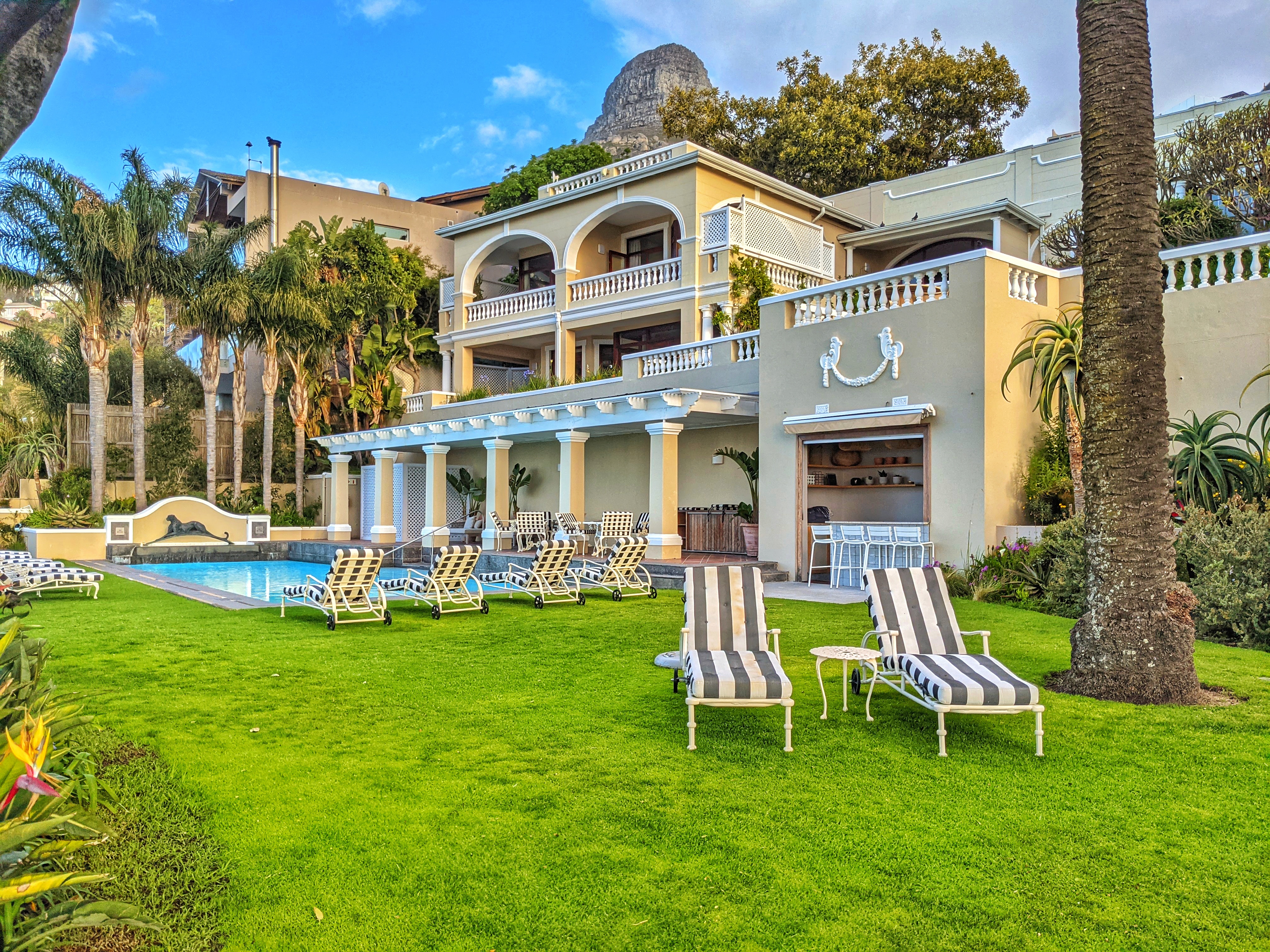
Indeed, when you come to Cape Town, you best come hungry. And thirsty. “We’re the food capital of the continent,” says Shelley Mileham, a local guide with Cape Fusion Tours. “We eat and drink … a lot!”
Consider getting started at the Oranjezicht City Farm market, showcasing a wide swath of the city’s best food vendors, purveyors and producers. But also be sure to stop into some of the city’s signature restaurants, such as Local, which chef Liam Tomlin recently converted from his original Chef’s Warehouse. While the restaurant may pull in hungry first-time visitors like myself, as the name implies, it’s designed more as a space for regulars and residents. It’s a multi-concept complex with an array of different settings and cuisines on offer, from Japanese yakitori fare to Middle Eastern mezze.
During the worst of the pandemic shutdowns, Tomlin found a way not only to keep his team afloat, but also to put them to use, at one point feeding 10,000 people per day in the devastated wine country outside of the city, where with restaurants shuttered and tourism at a standstill, there’s little if any other business. The idyllic towns of Franschhoek and Stellenbosch are on the mend now, though, and their many world-class wineries and restaurants have reopened their doors to visitors.
It seems like everyone in Cape Town’s food, beverage and hospitality scene knows one another, and the industry in the city feels quite communal, almost like a small town, despite the metro area being home to more than 4 million people. Still, Cape Town, beautiful as she is in both aesthetics and spirit, is a complicated place. As is all of South Africa. Take the corruption and polarization inherent in American politics, the disparity between haves and have nots, and exponentially increase them, then set it all in a still-freshly-post-apartheid setting. Sprinkle in the shutdowns and hardships of a pandemic and you’re left with a chaotic canvas.
My mere presence as an American traveler in town was hailed by many I spoke with as a welcome sign of the pandemic’s wounds ever-so-slowly beginning to heal. Consider this an open invitation, then, from everyone in Cape Town who’s cooking up a tasty dish, pouring a prestigious vintage or stirring an inventive cocktail to come down and see for yourself what the city has to offer.
Back to the Bush
It was after Cape Town that I decamped back to the bush to find Laz and his occasional tricks of the trade. Sabi Sabi Earth Lodge is not the place where you’re awoken in the middle of the night from rustling hippos and thrashing elephants. No, the suites here are fully enclosed, air-conditioned villas, with private plunge pools, indoor-outdoor showers, and an array of seating nooks and crannies.
The lodge’s rustic stone construction is built into a slope, fading into the surrounding landscape, while within you’re afforded the utmost in sophisticated safari creature comforts. There’s a full-service spa on-site, a temperature-controlled wine cellar with several thousand bottles of South African wine, and a bar stocked with a solid collection of single malts.
Besides the cheetah cubs and several leopard run-ins, Laz led us to several viewings of the local lion prides. We also spotted a pack of wild dogs playing with one another and occasionally breaking rank to chase down a meal, a small pack of hyenas always scampering in their wake, hoping to steal said meal. When the wild dogs sit down, they very much seem like cuddly domestic mutts. Do not be fooled: wild dogs are some of the most effective hunters out here, using their strength in numbers to outflank and encircle prey.
Lions, the would-be kings of the jungle, are actually rather far down the list, as far as safari bucket lists are concerned. “A whole pride of lions cannot compare to this one leopard,” Laz said at our prior faux-impala sighting.
Predatorily speaking, lightning-quick cheetahs almost always succeed once they spring into action, while leopards rely on subterfuge, pouncing on their unwitting prey from hidden positions. Lions only score a meal perhaps a third of the time, but when they do, they bring down the big prey, and witnessing a pride devour a wildebeest or a buffalo is as visceral as safari-viewing gets.
It was something I would experience on the last leg of this journey at Singita Lebombo, one of the most coveted safari stays in South Africa. The lodge is tucked away on the eastern edge of Kruger National Park, adjacent to South Africa’s border with Mozambique, and it’s a modern spectacle of glass and steel villas perched on a cliff above the N’wanetsi River.
The resort has two sleek infinity pools and a sun deck that feels as much South Beach or Seychelles as it does safari, a vibe only amplified as you traverse the elevated wooden plank walkways to your secluded suite. Though the rooms have full floor-to-ceiling glass walls, they still manage to blend into their surroundings. That’s thanks to being concealed behind wood paneling that draws inspiration from the many eagle nests of the area. The serene poolside setting, meanwhile, adds a whole new dimension to the safari experience, and what better way to indulge in a bit of R&R between the very rigorous routine of game drives?
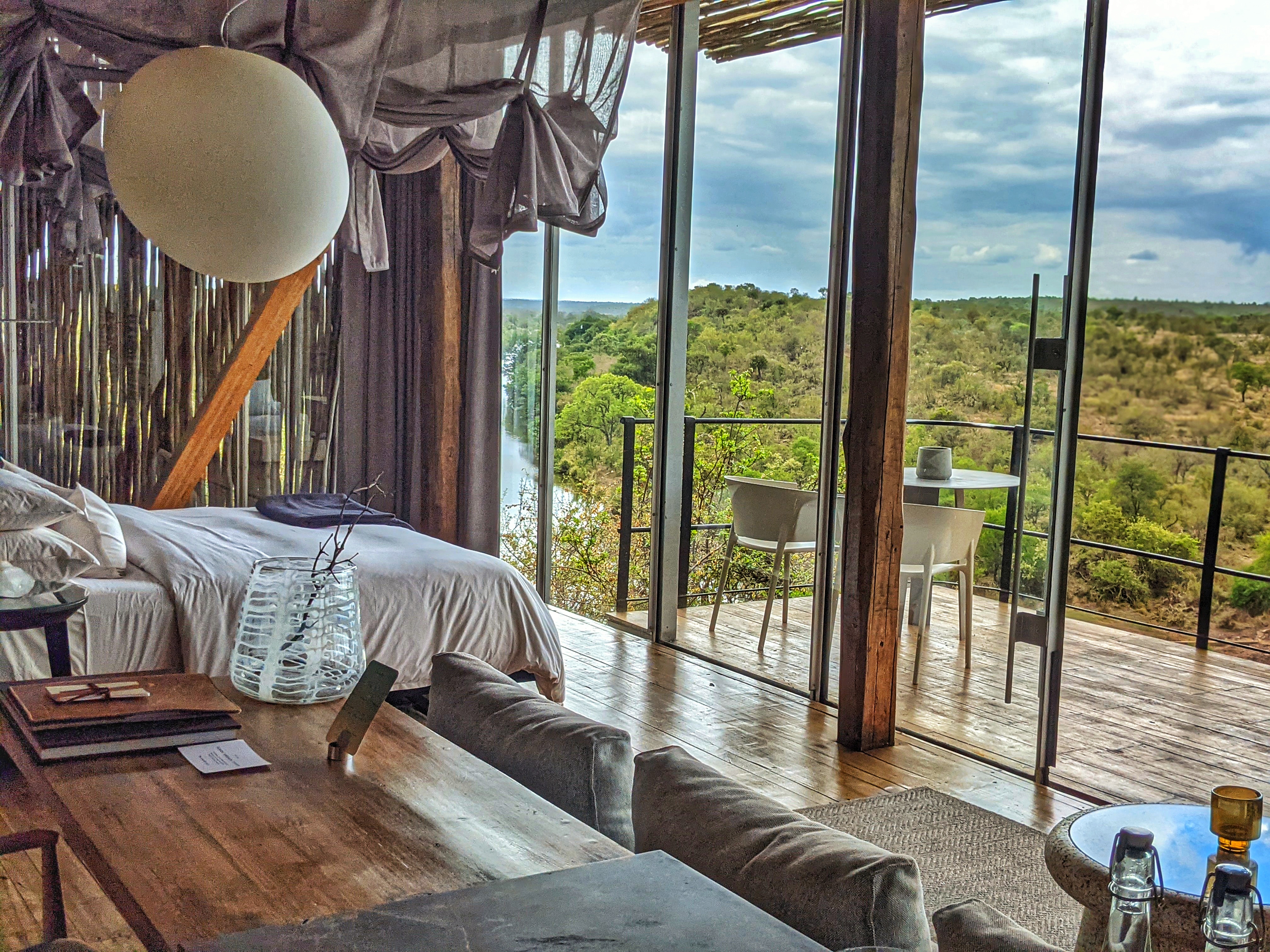
“Driving from Skukuza [airport] through Kruger takes two and a half hours, and it feels a bit like Disneyland,” Tomlin told me when we met in Cape Town. While we don’t envision safaris this way, keep in mind that for South Africans, a visit to Kruger is like an American driving to the Grand Canyon. Most locals drive themselves along the main roads of the park, which with its pavement and road signs feels like more of a curated tourist attraction than an off-the-beaten-path adventure. “Once you take the left turn for Singita, though, and get off the pavement and onto the dirt, that’s when it gets real. Get the dust in your face, you know?”
There might be dust in your face on the drive. But that’s only until the warm, pleasantly scented towel you’re handed upon arrival washes it off, readying you for epic multi-course meals with customized wine pairings based upon your taste preferences and interests. Tomlin would know a great deal about that, as he oversees the culinary program at Singita’s 15 lodges across South Africa, Tanzania, Zimbabwe and Rwanda.
Singita Lebombo is a modernist, almost hedonistic, safari outpost, so dialed in and lavish is its approach to luxury service. Sitting on the daybed of your room’s viewing deck — which can be equipped with a mosquito net so you can sleep under the surreal stars above — you can watch the elephants taking a drink from the waters below, and suddenly, perhaps, a white-haired vervet monkey will scamper past. Guard your snacks closely, because these bold, blue-balled fellows will make a play for them, having figured out that there are easy treats to be nicked off their lazy, larger, long-lost cousins.
Later, a honey badger strolled past the outdoor dining area, proving he truly didn’t give a shit as a dozen staff members tried to shoo him away without success. This honey badger had — and this is not a joke — developed an affinity for Aperol Spritzes.
Kruger is known for its abundant big cats, and that’s even more the case when you’re on a private swath of land such as the one Singita Lebombo, and its sister lodge, Singita Sweni, call home. It didn’t take long for our guide Tovhi — who, as one of the few Black female safari guides to be found in the country, is proudly helping push the industry forward — to lead us to an amazing pride of 15 lions, including four tiny, adorable cubs.
The group was feasting on a buffalo, growling and crunching and pulling apart its flesh, gorging themselves until their bellies were so full they could hardly walk. David Attenborough was narrating the scene as it unfolded in my head, with the cubs suckling from their mothers and unleashing tiny little mewls while a few feet away their elder siblings satiated themselves on the fresh kill and struck fear into the hearts of would-be interlopers with monstrous, guttural roars.
It was sensory overload, almost too much to take in at once, so it was a good thing the sun was approaching the horizon, signaling it was time for a sundowner. Before we departed on the drive, Tovhi had asked for my preference for the evening’s ritual, and I requested a bottle of bubbles. You remember the rule about asking and receiving, right? She broke out the bubbles, but also her machete, suggesting that I should have at it with a bit of safari-style sabrage. As one does.
If that wasn’t enough, somehow, still, the best was saved for last. On my final morning at Singita, two spectacular black-maned male lions were on the prowl, while in the distance, a mother cheetah kept watch over her three older cubs, knowing full well they could scamper away with ease if the situation required it. Also on the scene were two competing packs of hyenas dueling it out over territory, and then, to our surprise and the delight of all the aforementioned animals, a solitary leopard made a kill of an impala.
Larger predators and groups lurked in every direction, so the leopard knew it needed to drag its kill up into the tree to eat in peace. Those two lion brothers got wind of the scene, though, and had other ideas. They chased the leopard into the tree and forced her to leave her hard-earned meal below, with them. Even a lion isn’t above scavenging, if given the opportunity, and the leopard could only watch in dismay as it hid in the branches, knowing full well that after the lions were done with their meal, the hyenas would get their turn, and there would be none left for her. She’d have to stay in solitude and watch it all unfold.
If I asked for the most memorable possible ending to this safari sojourn, I received it. That’s the whole ethos out here, after all. The scene — and that’s what it felt like, a stage scene crafted on my behalf — called to mind a tone-setting moment from the beginning of the trip at Selinda, when camp manager Jamie Woodward was detailing the daily schedule to come. “We’re going to get you up at 5:30 in the morning, but we’ll have tea or coffee waiting for you,” said Woodward, who manages the camp with his partner Ruby. “Or a gin and tonic. We don’t judge.”
Ask and you shall receive, remember? Nobody is saying you need to. Or even that you should. But it’s all on offer on safari, and it’s nice to know that you could.
This article appeared in an InsideHook newsletter. Sign up for free to get more on travel, wellness, style, drinking, and culture.
